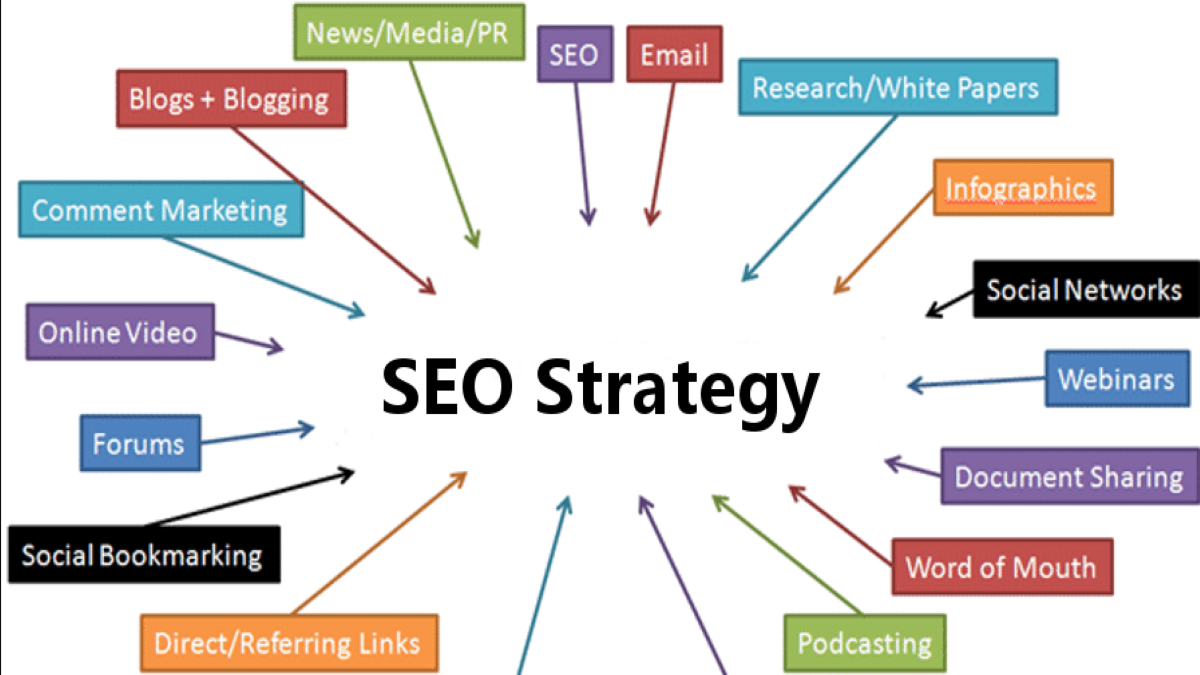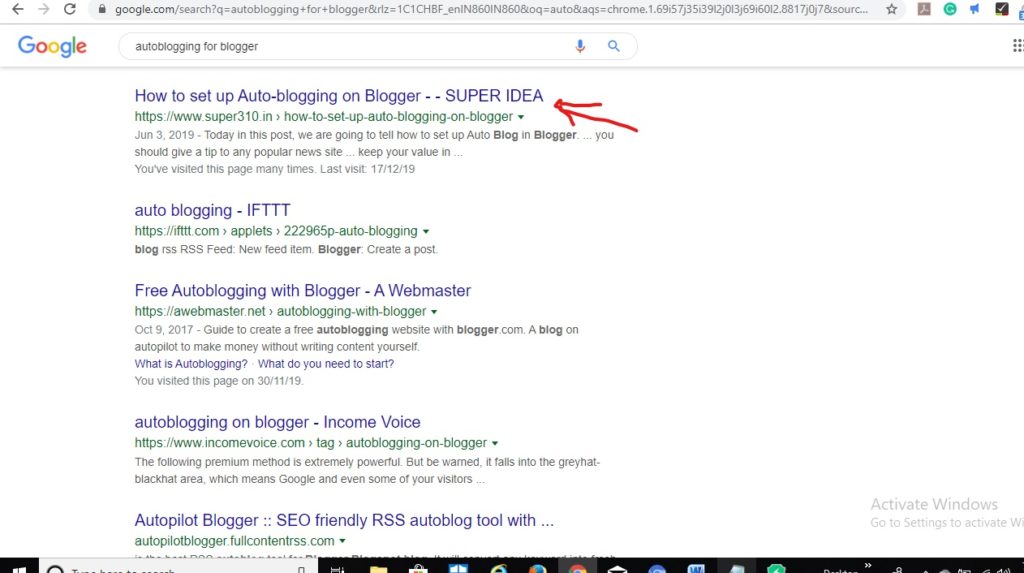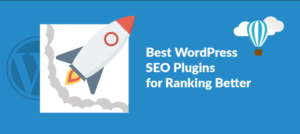Every day new websites are created.
Landing your new website is the most difficult task. Gaining traction takes very good search engine optimization (SEO).
The days when all you needed was to find a couple of good keywords and write a couple of blog posts are long gone. Don’t get me wrong, keyword research and quality content are still integral parts of SEO, but there is also much more to worry about.
Now, you only need to move beyond keywords and content.
Here are several ways to scale the search engine optimization of your new website in 2020.
1. Choose your domain name carefully:
The domain name ranking factor is one of the search engines that look to find out what a page is. If it is possible to choose a domain name that is relevant, easy to remember, and includes the main keyword that is ideal for you.
This is not something you should force. For example, if your business is called Howard’s Daily and the www.howards-deli.com domain is available, it is a better pick than www.egg-salad-sandwiches.com. Confusion is likely when customers already know that you try to find this site.
There are some good tools that can help you brainstorm ideas about available domains to see what’s available, so you can’t set your sightseeing to a name that you don’t have.
2. Basics: Start with keywords, content and usability
It is no secret that you need keyword-focused content and a user-friendly site to rank on Google.
According to Google, content is a top-ranking factor, tied to backlinks from official sources.
In addition, usability factors such as speed are now direct ranking factors in the mobile-index world.
Without content, your website does not appear in search results for keywords in your niche.
Without proper keyword targeting, you can write content that no one is really looking for.
Without the usability and speed of the website, people did not return again.
Scaling a new website requires precise precision on all three.
This should be your first step. Why?
More content allows you to drive more organic traffic. More content helps to generate more links. And if you have zero content to consume, then people did not return (just let it be more than 15 seconds). Also, if your site is not optimized, people will have bad experiences.
Before you even think about publishing a piece of content… speed, uptime, security, and usability need to be your main focus. According to Google, three seconds is the best practice for speed. 99.94% is the uptime gold standard for your web host.
If your host provider is not giving you at least 99.94% uptime, then you need to upgrade. Seconds and minutes can result in financial losses and a damaged brand reputation.
What if your site crashes during a holiday sale? Or while receiving referral traffic? This is not good.
And what if your host doesn’t have the right online privacy and security settings? Looks like a lawsuit is waiting.
Improve the speed, uptime, security, and usability of your website before putting pen to paper. Now, the time has come for the material. Start with tools like Ahrefs and find keywords that are moderate in volume and have little difficulty:
Look at the current search results for these keywords, and start checking the top-ranking positions:
Click on each piece of content and note what features these posts contain.
for example:
- Do they have custom pictures?
- How long are the posts
- What are the major subgroups they use?
- Which related keywords are they targeting?
- Do they use schema markup?
- Outbound links included?
Now, make sure you hit these and more. Doing this ensures that your post is the best on the SERPs (search engine result page).
Repeat this process for your top keywords.
3. Select a reputable web hosting provider:
Google has been upfront about site speed being a ranking factor for SEO. Visitors are impatient and expect webpages to load within seconds (or less), so Google tries to only deliver results that will satisfy that requirement.
When you have many strategies, you can try to make your website faster over time, one of the best steps to take from day one is choosing a web hosting provider that can provide consistent speed.
4. Do keyword research:
Keyword research is a big part of SEO. To do many other things on this list effectively, you must first have a clear idea of the key words and subject areas on which you want to focus your SEO efforts.
Many SEO tools provide keyword suggestions and data on the amount of traffic and competition you can deal with for each keyword. For most of them, you will have to pay a membership fee, but you can use Google’s Keyword Planner to get started for free:
When choosing your keywords, be sure to be realistic. SEO is competitive and a brand new website is not in a good position to compete for popular, broad terms. Be specific and find long-tail keywords to target. For example, something like “East Chicago Modern Art Sellers” is more attainable than “Art Sellers”.
5. Start guest blogging to build brand awareness:
Building brand awareness is the biggest influence in the initial stages of a website. One of the first things people look for in search results is a familiar brand.
And it makes sense:
Click on Site X when they know and already trust Site Y for information? They did not win.
This is bad news for you. However, you do not need to see that you click to go to a contestant. Instead, you need to start building brand awareness from the ground-up.
how?
Targeted Posting.
Start looking for websites in your niche that accept contributor content:
There are countless such round-up posts in almost every niche. However, it does not apply to guest posting on any site. Pick your goals wisely.
Target sites again in Ahrefs and see their domain authorization and traffic metrics:

Do they have a strong domain authority (50+)? Do they have real organic traffic like the liquid web? If so, add them to the list of sites you want to post and start reaching out.
For example, take the company Eterneva that transformed into diamonds:
They regularly guest blog on other niche sites in the grief industry and other sites hang on to their target audience.
The final key for guest posting is to apply with content that is not common. Content that is new to their site. Cover topics they don’t and share a unique perspective that will get people back to your site.
Check out these unconventional content marketing tips to get more information on how to win in content marketing once and for all.
Long story short … if your content is boring, you won’t get much traction from guest posts.
6. Form Real Relationships and Partnerships
When you create a foundation for your new website with original content and guest posts, the real work comes into play:
Increase your social traffic.
Partnering and building relationships with others in your industry that can help you grow (and what you can help grow as well).
Start connecting with people on social media who maybe just like you.
Don’t forget that podcasting is red hot right now and if you want to start a podcast, this is a great way to connect with others in your industry.
If you need a tool to streamline your engagement process across all platforms, consider tools like SocialPilot to make your life easier.
Just one thing while complicating…
Do not attempt to partner with industry veterans yet, they will see right through you. Instead, focus on connecting with former partners in your space. People who share the same viewpoint or who have just started a business.
Build your network, promote their content, and they will do the same for you.
7. Plan the architecture of your site:
If you are starting with a simple site that has just a few pages, all of this may not seem important right now. But it is still smart to plan your site architecture beforehand so that you have a structure on the go.
For most websites, your site architecture should have a pyramid structure. Next to the next most important pages (usually those that go to your main menu) is your homepage at the top. Below them, you’ll add any subcategory and personal pages that fall within them.
When you plan the architecture of your site in advance, you will make sure that your website is organized to prioritize the most important pages in terms of how easy it is for visitors, and you will be able to navigate among visitors. Will make it easier. To find pages on the site for what they need.
8. Use a mobile-friendly design:
All of the SEO algorithm updates announced by Google in recent years are about mobile.
More and more people turn on their phones so that most of their browsing, users and search engines alike can provide a seamless mobile experience from websites. When you are building a new website, it is essential that you make it mobile-friendly.
9. Optimize the Page URL:
Customize the URL of every page on your website. To the best of your ability, you want each URL to be easy to remember, communicate what’s on the page and where possible, use your target keywords for the page.
Your site architecture should also help to create a structure for your URL that provides information to the visitor about their position in the site. For example, if your top-level categories are shoes and a subcategory boots, the product page might look something like www.your-website.com/shoes/boots/product
10. Optimize the Title Tag:
The title tag is the part of the website that Google visits to find out what the page is, which makes it another good place to use your target keywords.
Try to keep your title tag short – Google will only display 50-60 characters on the search engine results page and even the title’s title will appear in the tab at the top of your browser. And don’t put keyword content here. One must use their primary keyword to trick once.
11. Optimize the title:
When writing for the web, a heading is a good tool to better organize your copy so that it is easy to read and scannable for your visits. As an added bonus, your title is another sign on Google about what your page is about.
Strategically include your target keywords in headlines on your web page – but only where it makes it intuitive to do so. If you find the reader strange then you don’t want to force words, but if you can use keywords in a way that makes sense, then do so.
12. Optimize text on the page:
You have to be careful here because search engines notice keyword stuffing and your website may be penalized for it. But as long as you only use your target keywords (and relevant synonyms) in the context where they make sense, it’s a good practice to include them in the text on the page.
In most cases, as long as you have selected targeted keywords that are relevant about the page (which is important!), This part should come naturally.
13. Link to other pages on your website:
Internal linking gives you a way to signal to Google what your page is about the anchor text you use. If you are not familiar with the term, anchor text refers to words that are hyperlinked. Google sees the words used each time a link to a web page and takes it as information about that page.
Internal links also give you a way to show search engines how your various pages are connected and drive traffic from one page to another on the website. Since you ideally want your visitors to stick around and spend some time on your website (which is also good for SEO), providing helpful internal links is a good way to do this.
14. Send your Sitemap to Google:
Google must crawl your website before your web pages appear on the search engine results page.
Typically Google’s crawlers will build their place on your website over time, even if you do nothing, but you can speed things up by submitting your sitemap through Google Search Console. You can communicate directly with Google that your website exists and specify all specific pages on it.
Final Thoughts:
Getting traffic through organic search to your new website in 2020 is not an easy feat.
More competition makes it harder than standing outside. To deal with this, you have to go beyond content and keywords.
Do not forget that 2020 is becoming the year of omnichannel marketing and customers are active across multiple platforms and mediums, providing an omnichannel customer experience.
They are the basics, entry-level requirements. From there, you need to scale your guest blogging outreach into guest blogging, link-magnet content, purposeful email marketing strategies, and develop real partnerships that can help you reach scale and the right audience.
Otherwise, your content is only content that no one will see and what is there in it?
FAQ:-
What is SEO strategy planning?
An SEO strategy plan is a blueprint for your search engine optimization activities that can be mapped to seven definite steps. This is a long-term solution to drive pre-qualified traffic to your website, improve conversion rates, and increase your online revenue.
What are the top three SEO strategies?
There are three types of SEO that you need for a well-rounded organic search strategy:
- On-page SEO
- Technical SEO
- Off-page SEO.
What is an SEO strategy?
- Keyword research is the first step to a successful SEO Strategy.
- Meta tags still play an important role in SEO.
- material. It is true, content is king.
- Back If the content is king, backlinks are queen.
- social media.
- Product images.





